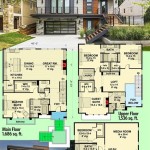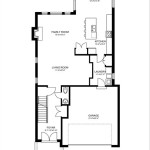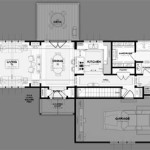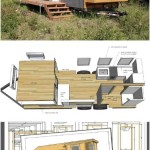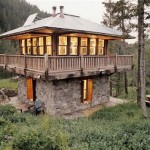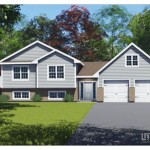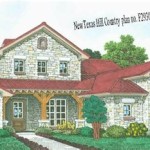House Plans for Bungalows
Bungalows offer a unique blend of charm, practicality, and affordability, making them a popular choice for homeowners. Their single-story design, typically featuring a low-pitched roof and a welcoming front porch, provides a comfortable and accessible living space. Understanding the variety of bungalow styles and key design considerations can help prospective homeowners choose a plan that best suits their needs and lifestyle.
Several distinct bungalow styles have emerged throughout architectural history. The Craftsman bungalow, perhaps the most recognizable, emphasizes natural materials, handcrafted details, and a connection to nature. Key features often include exposed rafters, built-in cabinetry, and a prominent fireplace. California bungalows, on the other hand, frequently incorporate stucco exteriors, Spanish tile roofs, and arched doorways, reflecting the influence of Spanish Colonial architecture. Chicago bungalows, common in the Midwest, are characterized by brick construction, wide front porches, and dormers that provide additional light and ventilation to the attic space.
When selecting house plans for a bungalow, careful consideration of square footage and layout is essential. Smaller bungalow plans, often under 1,000 square feet, are ideal for individuals, couples, or small families seeking a cozy and manageable living space. These plans typically prioritize efficient use of space, incorporating open-plan living areas and multi-functional rooms. Larger bungalow plans, exceeding 1,500 square feet, can accommodate growing families or those desiring more spacious living areas. These plans may include features like separate dining rooms, additional bedrooms, and dedicated home office spaces.
The number of bedrooms and bathrooms is another crucial factor in choosing a bungalow plan. Two-bedroom bungalows offer a balance of affordability and practicality, suitable for smaller families or those who frequently host guests. Three-bedroom bungalows provide additional space for growing families or those who require a dedicated guest room or home office. The number of bathrooms should also align with the household's needs, balancing convenience and practicality.
Modern bungalow house plans often incorporate contemporary design elements while retaining the essential characteristics of the bungalow style. These plans may feature open floor plans, large windows to maximize natural light, and updated kitchen and bathroom designs. Sustainable features, such as energy-efficient appliances and solar panels, are also increasingly common in modern bungalow plans. The integration of smart home technology, allowing for automated control of lighting, temperature, and security systems, is another trend in contemporary bungalow design.
Accessibility is a key consideration in bungalow design, particularly for individuals with mobility challenges. Single-story living eliminates the need for stairs, making bungalows inherently more accessible than multi-story homes. Incorporating wider doorways, ramps, and adaptable bathroom features can further enhance accessibility and ensure comfortable living for all residents. Universal design principles, which prioritize creating spaces usable by people of all ages and abilities, are increasingly being incorporated into bungalow plans.
Outdoor living spaces are an integral part of the bungalow experience. Front porches, a hallmark of the bungalow style, provide a welcoming space for relaxation and socializing. Backyards can be designed to include patios, decks, and gardens, creating opportunities for outdoor dining, entertaining, and enjoying nature. Careful landscaping can enhance the curb appeal of the bungalow and create a seamless transition between indoor and outdoor living spaces.
Budget is a significant factor in any home building project. The cost of constructing a bungalow can vary depending on factors such as size, materials, and location. Working with a reputable builder and obtaining accurate cost estimates are essential for effective budget management. Exploring financing options and considering potential cost-saving measures can help ensure the project stays within budget without compromising quality or desired features.
Choosing the right house plan for a bungalow requires careful consideration of various factors, including style, size, layout, and budget. Researching different bungalow styles, understanding the needs of the household, and consulting with architects and builders are crucial steps in the planning process. By thoroughly evaluating these factors, prospective homeowners can select a bungalow plan that reflects their personal style and provides a comfortable and functional living space for years to come.
Finding the perfect bungalow house plan involves exploring various resources. Online platforms offer a vast selection of pre-designed plans, allowing homeowners to browse and compare different options. Architectural firms can provide custom design services, tailoring plans to specific needs and preferences. Working with a qualified architect can ensure the plan meets local building codes and incorporates desired features and functionalities.

Splendid Three Bedroom Bungalow House Plan Modern Plans Design

View House Plans Bungalows Y And A Half Two 108a Mullingar Westmeath Residential Commercial Planning Service Extension Conservatory Garage To Achieve

Your Guide To Bungalows What Is A Bungalow House And More Houseplans Blog Com

Bungalow House Plans Floor Designs Thd

Bungalow Floor Plans Style Homes Arts And Crafts Bungalows Craftsman House

Bungalow House Plans From Don Gardner Houseplans Blog Com

Bungalow House Plans We Love Blog Homeplans Com

Open Plan Bungalow

Free Bungalow House Designs And Floor Plans With 2 Bedrooms 3 4 Mansion Cool

Bungalow House Plans We Love Blog Homeplans Com

